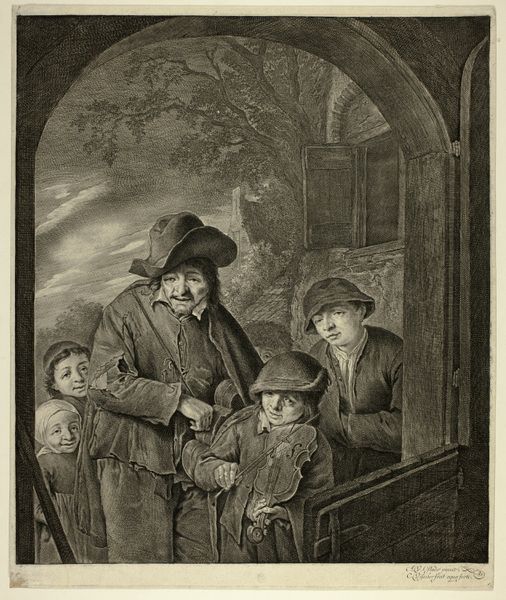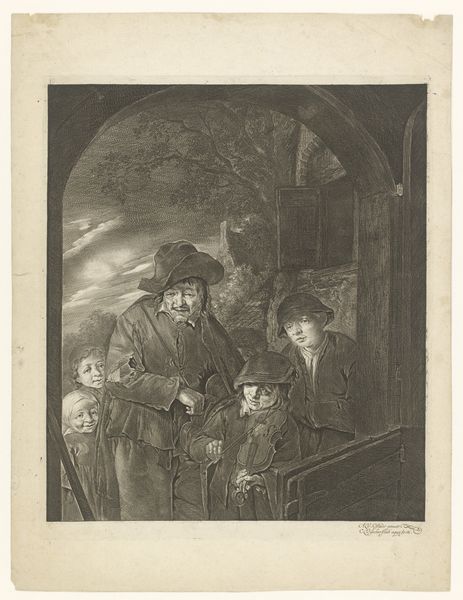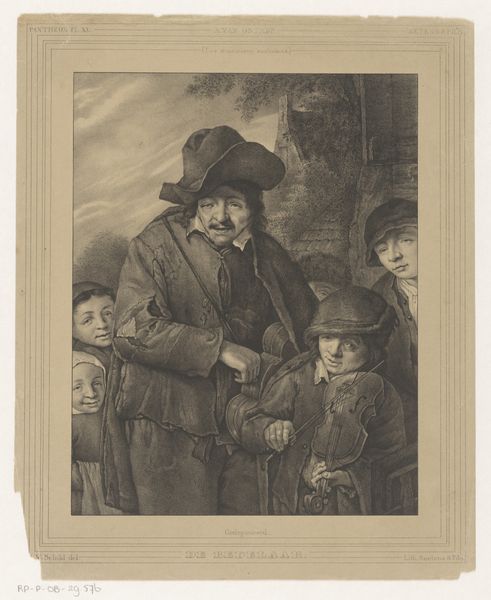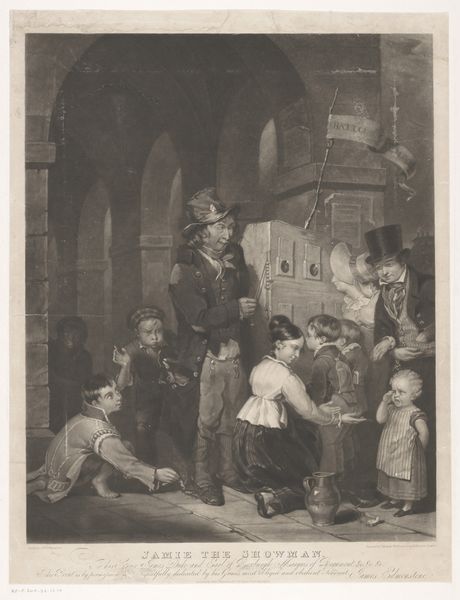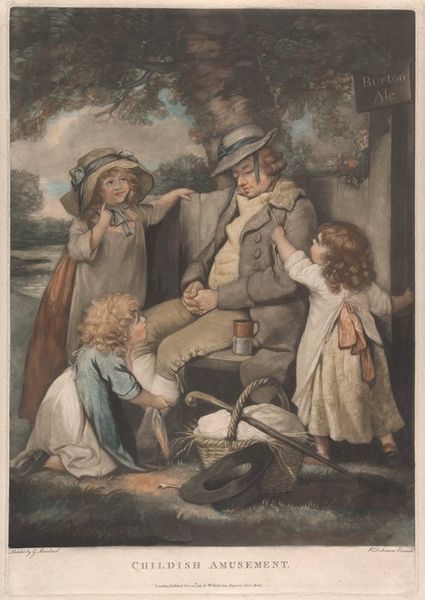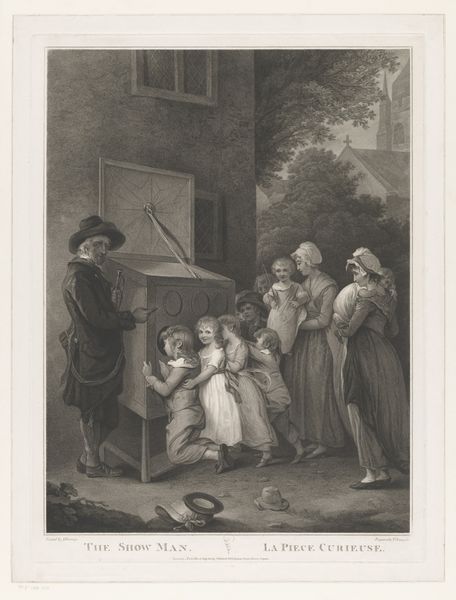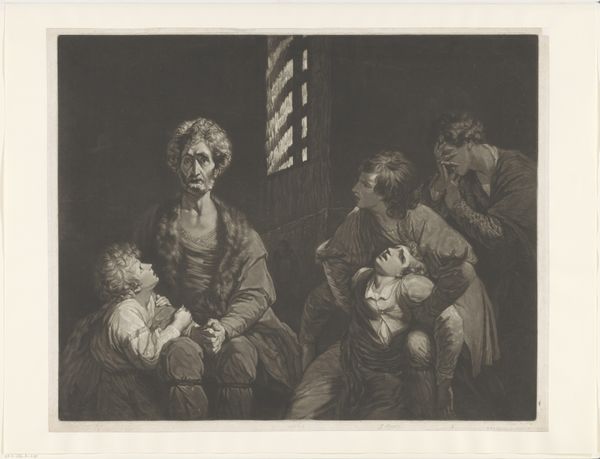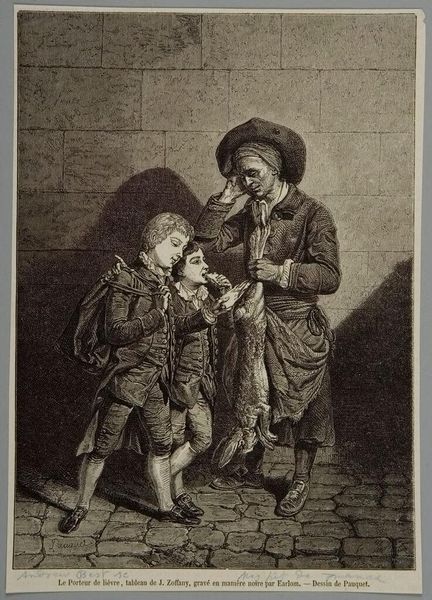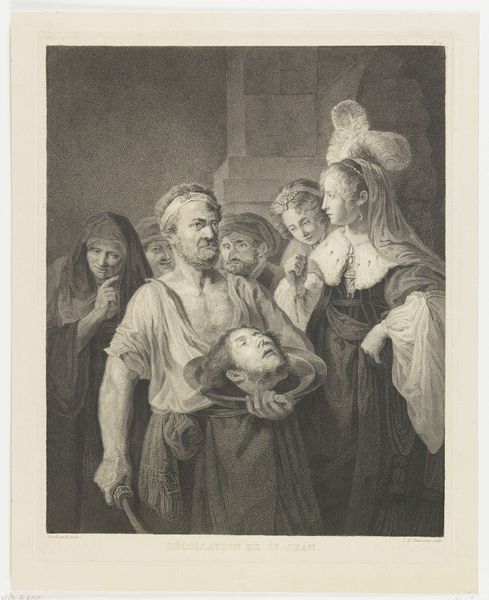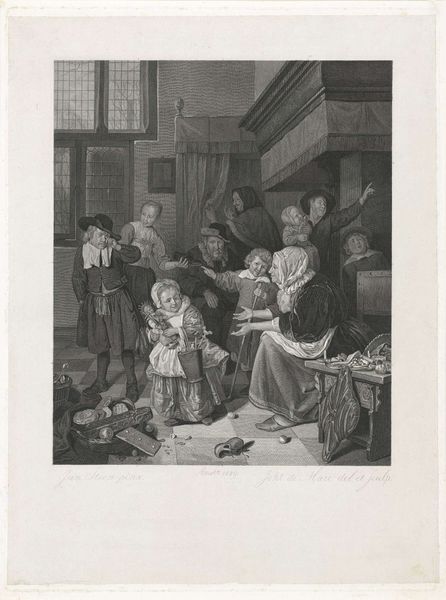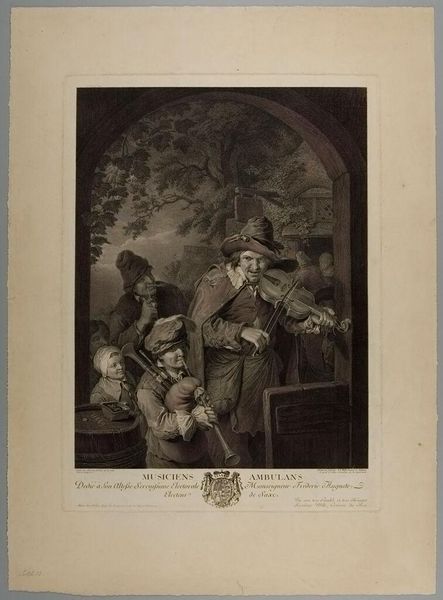
drawing, print, paper, engraving
#
portrait
#
drawing
#
dutch-golden-age
# print
#
paper
#
genre-painting
#
engraving
Dimensions: 380 × 322 mm
Copyright: Public Domain
Curator: This engraving is entitled "The Hurdy-Gurdy Player," created by Cornelis Visscher around the 1640s. It's a piece rooted in the Dutch Golden Age, currently residing here at the Art Institute of Chicago. Editor: Oh, there's a real old-world charm to it! It feels like a glimpse into a bygone era. It’s full of interesting faces gathered by what seems like a doorway; something both inviting and confining. Curator: It's an intriguing social tableau, capturing a moment of musical performance and spectatorship. Visscher’s use of engraving brings out textures, reflecting both the coarse fabrics of the clothing and the expressions of each individual. Editor: I'm drawn to the figures clustering around the main performer; their faces really hold stories. There's a curiosity, but maybe a little desperation there too, it seems like it’s also a representation of a struggling group depending on the musician's act. What were prints like this used for back then? Curator: Prints such as this would circulate within a network of collectors, artisans, and others, acting as forms of both currency and social capital. The paper itself—its source, its production—is just as key. These were accessible visual items documenting a way of life for a developing merchant class. Editor: That’s fascinating to think about… that the work had real functional purposes in addition to being art. In my perception, this work, in black and white and with many anonymous subjects, is a wonderful, honest look at the Dutch ordinary. Curator: Indeed. The work itself serves as both record and document of material culture, while we can appreciate its detailed rendering of textures, such as the musician's worn garment and his instrument. We shouldn't ignore the fact of its being reproduced many times, and available to wide social spheres. Editor: Looking closely, the play of light and shadow gives the scene a unique, intimate quality. A small detail: The open window above is a charming detail of everyday life, like something glimpsed rather than arranged. Curator: And in focusing on the materiality, and the means by which such images entered society, perhaps we start to understand how the art industry influenced the developing capitalist spirit of the Dutch Golden Age. Editor: What a wonderful point to close on. I find I am seeing more, the humanity within the technique and means. Thank you.
Comments
No comments
Be the first to comment and join the conversation on the ultimate creative platform.
